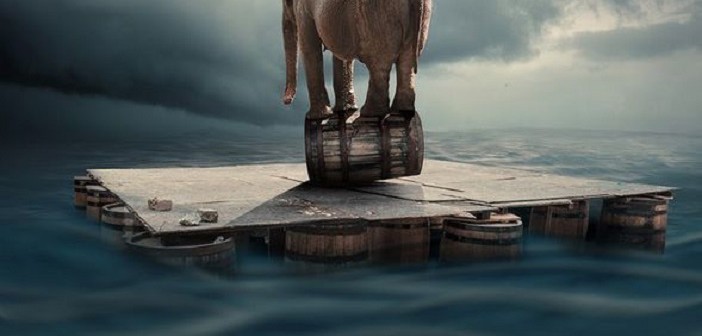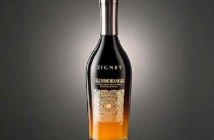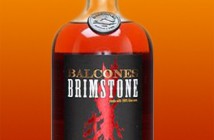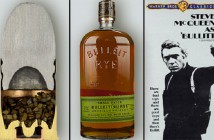What is cask strength?
Is it how strong the cask is? Is it the stress it can withstand in a rick (barrel) house stack? Does the kind of wood the cask is made of determine its strength? Does high charring weaken a cask and reduce its long term usefulness? Is the strength of a cask measured in units of elephants? I jest, of course. Actually cask strength has nothing to do with any of these!
Cask strength (also known as barrel proof in the world of US whisky) is a term used to describe a spirits alcoholic strength. It is measured in alcohol by volume (ABV) or proof. Proof is always double the ABV. So a whisky labeled at say one hundred proof will have an ABV of fifty percent alcohol. The remaining fifty percent being predominantly water. The term proof originated in the British Navy where sailors were issued rum rations, a practice that ended only in the 1970s. The “proof” they treasured was that their rum had not been watered down. The test: would sample stop gun powder from igniting? Only a full proof spirit would ignite. Too much water and the rum would not ignite. There would be no bang, no happy sailors.
A whisky that has been bottled at the proof that the spirit ended up at after its aging period is cask strength. It goes directly from the cask to the bottle. No further water has been added to dilute and reduce the proof. It is generally considered the premium offering and purest expression of a distilleries flagship malt.
A distillate maybe diluted reducing ABV directly after distillation. It is common to add water and lower the ABV before cask aging begins. Taking the whisky down from anywhere around 160 proof to a more common 140 – 100 proof. There are the obvious business benefits to adding the water as the distilleries have more whisky to age, raising the amount the distilleries have to bottle. But more importantly it is and should be a question of style and flavor profile. Interestingly enough Buffalo Trace have just released a series called the Experimental Collection which takes the exact same whiskies and starts the barrel aging process at four different proofs, ninety through one hundred and twenty five.
If the lowering of proof has happened before the new make spirit is put into barrel, the resulting fully matured whisky can still be bottled and sold as cask strength, because that is what it will be.
I love drinking cask strength whisky. Its amazing how many aromatics are released with just a few drops of water or by chilling and diluting with some ice. I get myself set up at home with a dropper and a glass of water (if you don’t have a dropper a straw and a thumb will do!) and settle down to experiment. When pouring a cask strength whisky look for the formation of small beads around the edge of the glass. It’s an obvious sign of high alcohol content! I always nose and taste the whisky as it is straight from the bottle. Then I add a drop or two of water and see what happens. Has the nose changed? Is there more obvious sweet or fruit elements to the taste? Below are a few of of my favorite cask strength bottlings if you can make the time to experiment with these it will be fun and delicious. Cheers.
Longrow Red Cabernet Sauvignon 52.1% ABV
Aged initially for seven years in bourbon casks and then transferred into Cabernet Sauvignon hogsheads, this is a fantastic limited-run addition to the Longrow family from the Masters at Springbank. I am generally automatically suspicious of wine finishes on my single malts as I have been let down by them on occasions. It was the Rocks from Bruichladdich that restored my belief, and would Springbank ever disappoint? I think not! The Nose: complex and beautiful. Buttery smoked haddock, coal and soap come to mind. Adding a drop of water brings on a leathery citrus-rind element. The Palate: incredibly full, with rich peaty notes that combine with red fruit and licorice in a truly harmonious way.
Glen Spey 21 year 50.4% ABV
A limited Edition single malt from Glen Spey on Speyside. The Nose: full of ripe tree fruit tones apple, pear, peach and even a hint of plum. A little water brings out creamy vanilla and a touch of chocolate. The Palate: starts with coconut and vanilla. The fruit comes through nicely giving a beautiful round sweetness.
Glen Farclas 2001 59.7% ABV
This Glen Farclas is a single barrel example bottled at eleven years old. Its robust nature sets itself apart from most other sherry cask Speyside malts. The stills at Glen Farclas are still heated on a direct fire basis. Direct fire heated pot stills are rare now in Scotland and the caramel created on the hot spot is a Glen Farcals signature. The Nose:earthy vine fruit tones, walnut shell, mustard seed & touch of fresh sugar cane. The Palate: vine fruit, hazel nut, pudding malt notes, touch of caramel, baking spice intense nutmeg long finish slightly aggressive but completely delightful in nature.
Dun Bheagan Caol Ila 22 year Old 55.4% ABV
This is a single barrel private bottling from Dun Bheagan, something of a rarity as Caol Ila will not release single casks to private bottling companies now. The distillery is currently running at full capacity just to meet the demand for the mighty Johnnie Walker blends of which Caol Ila is a major part so they have not got the spare barrels or inclination to share! The Nose: sweet char, high toned floral components, salted mango. Left to sit a for a while notes of honey roasted bacon emerge. The Palate: spicy vine fruit, chimney ash, earthy honey, sweet bacon fat and finishing charred wood.
Old Weller 107 The Original Wheated Bourbon. 53.5% ABV
Last, but not least, the Buffalo Trace produced Weller Antique 107 wheated bourbon. This is fantastic juice that never fails to impress. The Nose: rich full of corn, caramel, brown sugar. The Palate: overall sweet grain, sweet spice and this amazing dark chocolate. This bourbon shines when served on the rocks.




